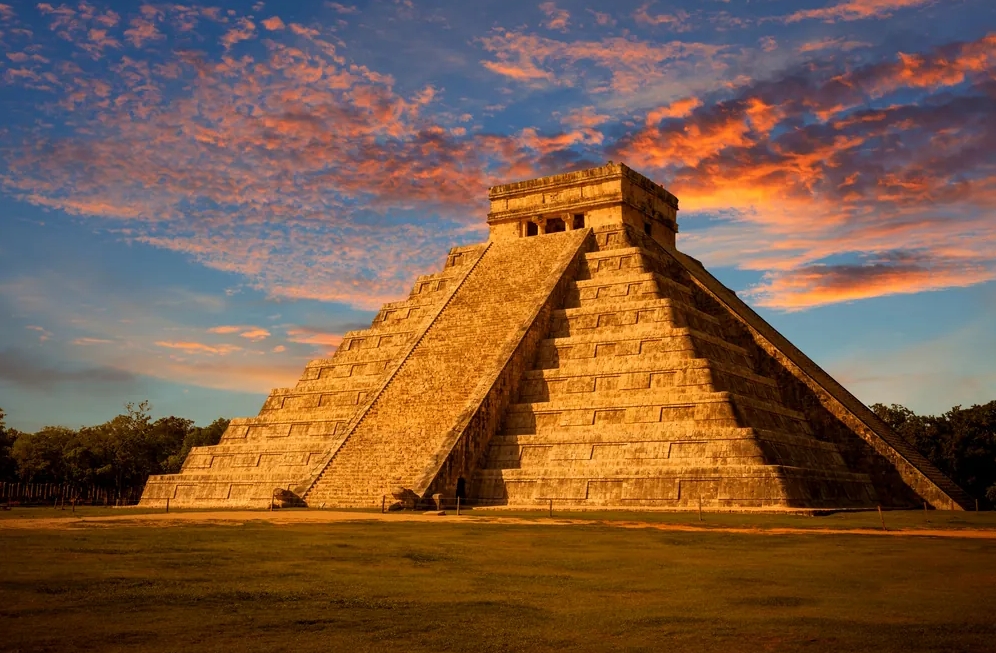Unlocking the Mystery of the Mayan Temple Pyramid
The Mayan temple pyramid isn’t just an ancient relic—it’s a portal into one of the most advanced civilizations in the Americas. Standing at the base of Chichen Itza’s El Castillo, I felt something electric in the air. The heat radiating off the stone, the rhythmic hum of jungle life, the perfectly timed echo when you clap your hands—it all feels like a moment suspended in time.
But these temples were never just for show. The Mayan temple pyramid served as a sacred center for religion, science, politics, and daily life. With steep steps climbing to the sky, intricate carvings etched into limestone, and ceremonies performed high above the jungle canopy, each structure tells the story of a people whose knowledge was as vast as the cosmos they studied. Have you ever stood in front of something so old and perfect, it made you question how much we really know? That’s what these temples do. They humble you.
So what secrets lie inside a Mayan temple pyramid? Let’s take a deeper look into the design, symbolism, and sacred spaces that made these temples so extraordinary.
Learn more about Mesoamerican history from the Smithsonian
The Engineering Genius Behind the Mayan Temples
Unlike the massive tombs of Egypt, the Mayan temple pyramid was not a place for the dead alone—it was a multifunctional marvel. From ceremonial stages to cosmic observatories, these structures served as the epicenter of life in Maya cities. What blows my mind is that the Maya accomplished all of this without metal tools, wheels, or draft animals. Their cities rose in the jungle using only limestone, wooden tools, and human ingenuity.
To construct a Mayan temple pyramid, workers quarried thousands of massive stones, transporting them across great distances without the wheel. Ramps, levers, and pure manpower drove the process. One of the most captivating facts is how precisely these temples were aligned. Many Mexican Mayan temples are positioned to align with key astronomical events—equinoxes, solstices, and lunar cycles. El Castillo Mayan temple at Chichen Itza is a prime example. Twice a year, on the spring and autumn equinoxes, shadows play along its staircase, creating the illusion of a serpent slithering down the steps. That serpent represents Kukulcan, the feathered serpent deity of the Maya.
Even crazier? The temples were acoustically tuned. The Mayan temple pyramid, El Castillo produces a chirping echo when you clap near the base—meant to mimic the call of the sacred quetzal bird. Planning that level of interactivity into a stone pyramid? That’s more than smart—that’s genius.
Read about the acoustic design at Chichen Itza
Hidden Worlds: What’s Inside the Mayan Temple Pyramid?
So what’s actually inside the Mayan temple pyramid? It varies depending on the site, but archaeologists have uncovered some jaw-dropping finds inside these ancient monuments. We’re talking about tombs, hidden staircases, underground chambers, and even entire older pyramids buried within newer ones.
Take the Itza temple, or El Castillo. Beneath its visible pyramid structure, researchers discovered two older versions of the pyramid layered within—kind of like Russian nesting dolls. This method of building on top of existing structures was common, often symbolizing renewal and the cyclical nature of Maya cosmology.
Some Mayan temple pyramid, like those at Tikal and Xunantunich, contain royal burial chambers deep inside. These spaces weren’t randomly placed—they were carefully located to align with the stars or subterranean water sources, believed to be connected to the Maya underworld, Xibalba. Artifacts found inside include jade jewelry, obsidian blades, hieroglyph-covered stelae, and even human remains.
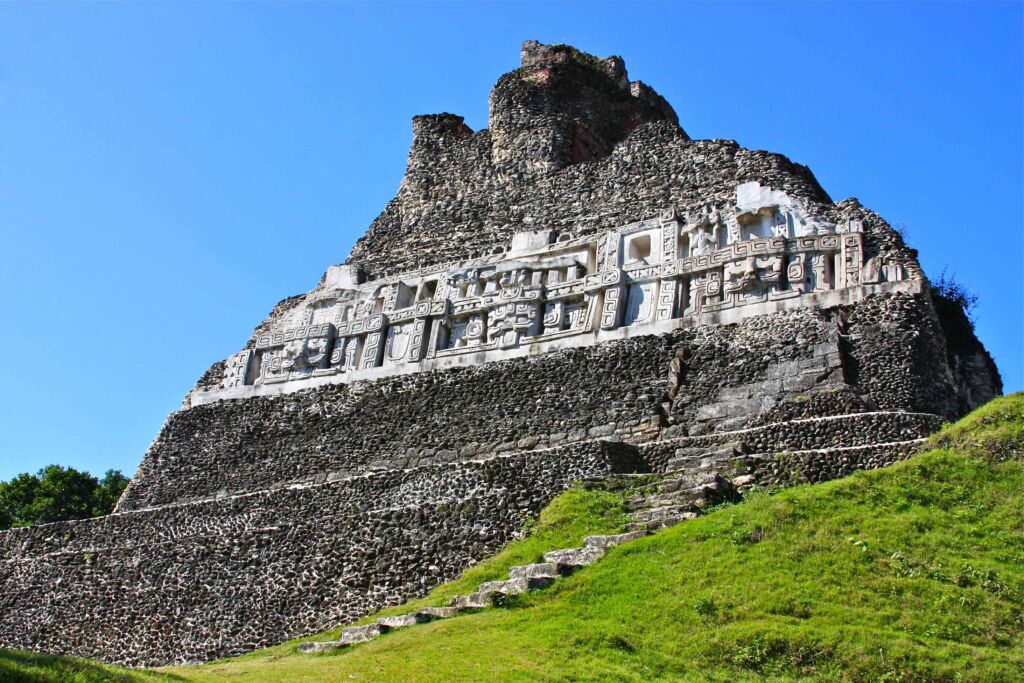
There are also tunnels—some for ventilation, others for ceremonial processions. In some temples, priests and rulers would ascend by external stairs while descending through internal passages hidden from public view. This theatrical entry and exit served to reinforce their divine status, as if they had entered the temple and returned transformed.
I remember stepping into a small interior chamber at the Xunantunich Mayan temple pyramid in Belize. The air was thick, the walls close. The quiet was deep enough to hear your own heartbeat. It’s a chilling yet reverent experience, one that instantly makes you respect the sacred energy these spaces still hold.
Seriously, if those walls could talk, we’d probably be speechless.
Also read: How to Get to Cenote Suytun
The Spiritual and Scientific Heart of the Maya World
The history of Mayan temples shows they were more than places of worship—they were the beating heart of society. A typical Maya city was built around its pyramid temple, much like European cities grew around cathedrals. But unlike passive religious structures, these pyramids were vibrant hubs of activity.
Atop the Maya temple pyramid, rulers conducted ceremonies, made offerings, and delivered speeches that could be heard across the city. They also performed sacrifices—sometimes animal, sometimes human—during key moments in the Maya calendar. These weren’t random acts of violence but structured rituals that sought to appease the gods and ensure cosmic balance.
Astronomy also played a major role. The Maya were brilliant timekeepers. They used their temples not just as places of worship, but as instruments for studying the heavens. The Maya temple Tulum is a great example—it served as a coastal observatory where priests could predict eclipses and track the sun’s movement across the horizon.
By embedding astronomical knowledge into their architecture, the Maya temple pyramid became a living calendar. The Mayan temple of Kukulcan has 365 steps—one for each day of the year. This was no coincidence. The steps, levels, and corners all mapped out cosmological patterns, allowing the Maya to maintain highly accurate calendars that rival our own in precision.
It’s like they had an ancient Apple Watch, made of stone and aligned with the stars.
The Best Ancient Mayan Temples to Visit Today
If you’re thinking of visiting a Mayan temple pyramid, you’re in luck—there are dozens of remarkable sites across Mexico, Belize, Guatemala, and Honduras. Each offers a different slice of Maya history, architecture, and environment.
The best-known site, of course, is Chichen Itza. Located in Mexico’s Yucatán Peninsula, it’s home to the famous El Castillo Maya temple pyramid. A UNESCO World Heritage Site and one of the New Seven Wonders of the World, this temple is probably the most photographed in the Maya world. Though tourists once climbed the steps for an unbeatable view, climbing is now restricted to preserve the structure. Still, the energy here is palpable, especially during the equinoxes when people gather by the thousands to watch Kukulcan descend in shadow form.
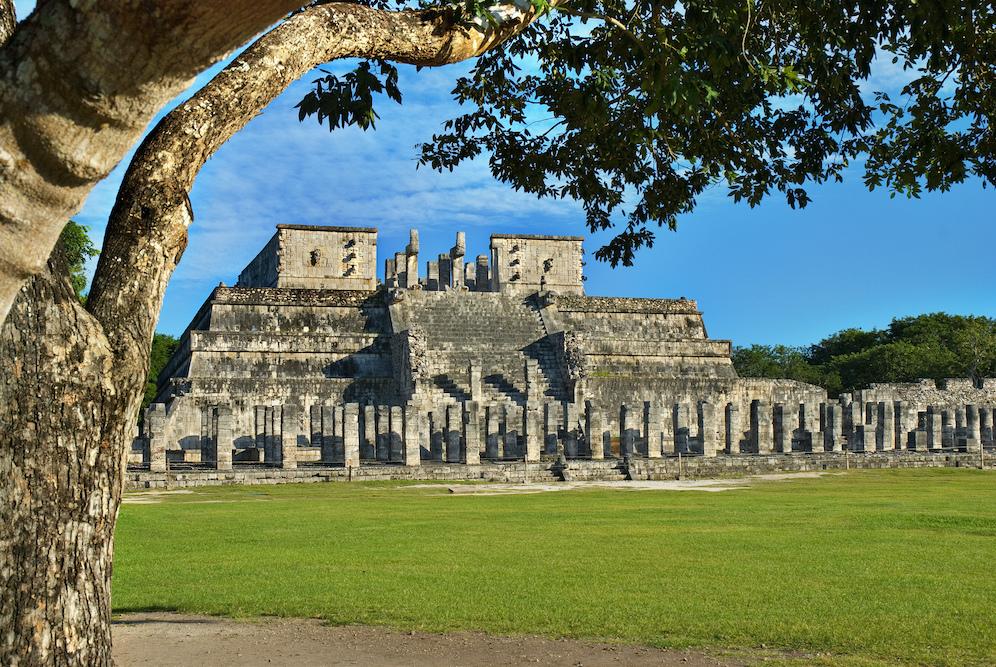
For a more off-the-beaten-path experience, the Mayan temple pyramid Tikal in Guatemala is a top choice. Nestled in the rainforest, its towering pyramids rise above the jungle canopy, giving you the surreal experience of standing above the trees. And then there’s Xunantunich in Belize—easily accessible from San Ignacio, with stunning views of the surrounding mountains. It’s one of the few where you can still climb to the top. I did it myself, and let me tell you, the view is worth every step.
Then we have the Maya temple Tulum, perched dramatically on the cliffs overlooking the turquoise waters of the Caribbean. Unlike most inland temples, Tulum served dual roles: religious site and coastal fortress. The contrast between ancient stone and endless ocean is visually breathtaking.
You don’t just visit these temples—you feel them. They linger in your bones.
The Mayan Temple of Kukulcan: Sacred Science in Stone
The Mayan temple of Kukulcan isn’t just a stone monument—it’s a living legacy. Known more commonly as El Castillo, this temple is a masterclass in sacred geometry and cosmological symbolism.
Let’s break it down: the temple has four sides, each with 91 steps, plus the top platform—totaling 365 steps, mirroring the solar calendar. During the spring and autumn equinoxes, the angle of the sun creates the illusion of a serpent slithering down the staircase. This phenomenon isn’t just pretty—it’s deliberate. It’s a ceremonial reenactment of the god Kukulcan’s descent to earth.
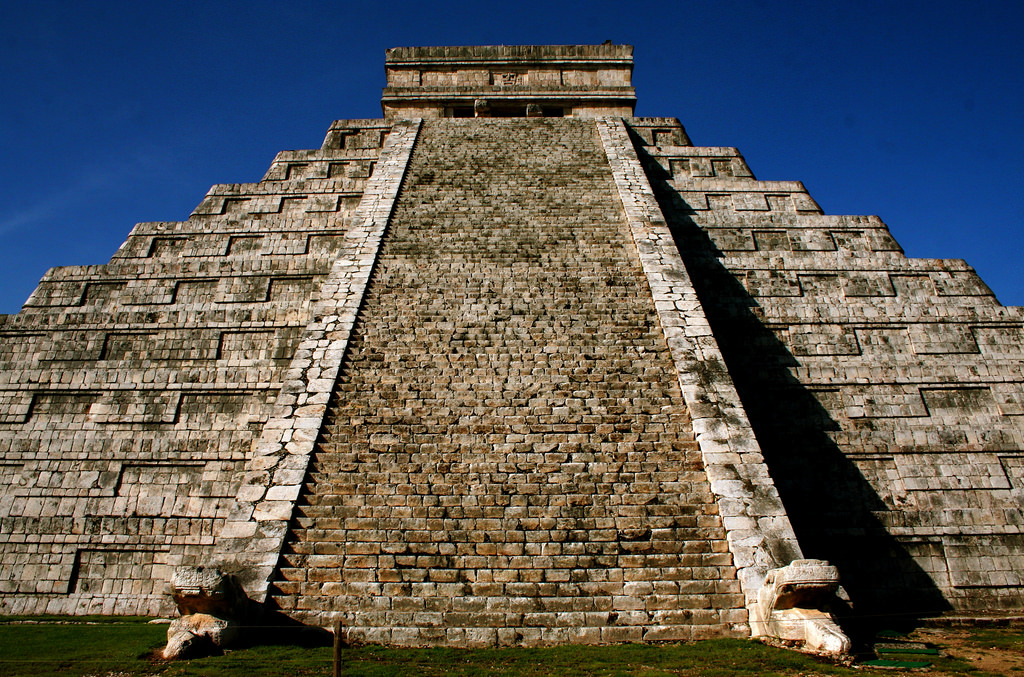
Even more astonishing, the temple creates unique sound effects. Clap once at the base and you’ll hear a chirp echo back—engineered to mimic the call of the quetzal, a bird sacred to the Maya. This fusion of sight, sound, and symbolism makes the Mayan temple pyramid of Kukulcan a full-sensory experience, unlike anything else in the world.
Locals and travelers still gather to witness these events. Despite modern barriers and conservation rules, the magic hasn’t faded. The air buzzes with anticipation. You’ll see people crying, hugging, even meditating. There’s something about this place that touches the soul, reminding us that ancient wisdom still has relevance today.
It’s not just history. It’s homecoming.
Also read: Off-the-Beaten-Path Yucatan Road Trip in 2025: Hidden Gems & Local Secrets
Why Maya Temples Still Matter in the Modern World
You might wonder: why does a structure built over a thousand years ago still matter today? The answer is layered, much like the temples themselves.
First, these temples teach us about sustainable living. The Maya integrated their buildings with the natural environment. They harvested rainwater, aligned buildings with the stars, and used local materials that lasted centuries. In an age where cities rise and crumble in decades, that’s a lesson worth noting.
Second, they represent the peak of ancient knowledge. Maya priests tracked the stars, predicted eclipses, and developed one of the world’s most accurate calendars—all from temple tops. They understood cycles—of the moon, of time, of humanity—in ways that feel deeply relevant as we face our own global challenges.
Third, the Mayan temple pyramid is like a time machine. Walking those steps, hearing the wind whistle through the corridors, imagining the rituals and celebrations—they ground us. They remind us that humans have always sought meaning, connection, and awe.
And most importantly? They’re alive in the hearts of those who still honor them. From local guides to visiting tourists, to scholars and spiritual seekers, the Mayan temple pyramid continues to inspire, inform, and connect us across time.
Let’s keep them alive—not just in photos, but in purpose.
Top Mayan Temples to Visit Today
Ready to explore one of these temples yourself? Here are the top Mayan temple pyramid sites that are open to visitors:
1. Chichen Itza, Mexico
- Home to El Castillo, the Temple of Kukulcan.
- Features equinox serpent shadow illusion.
- A UNESCO World Heritage Site and New Wonder of the World.
2. Tikal, Guatemala
- Located deep in the jungle.
- Offers dramatic climbs above the rainforest canopy.
- Temples often featured in movies and documentaries.
3. Xunantunich, Belize
- Smaller but incredibly scenic.
- Still allows visitors to climb the temple pyramid.
- Overlooks lush river valleys and mountains.
4. Tulum, Mexico
- Perched on Caribbean cliffs.
- Doubled as a fortress and observatory.
- A rare coastal temple with breathtaking ocean views.
Each site tells a different chapter of Maya history. And trust me, whether you’re a spiritual seeker, history nerd, or adventure lover, standing atop one of these temples changes you.
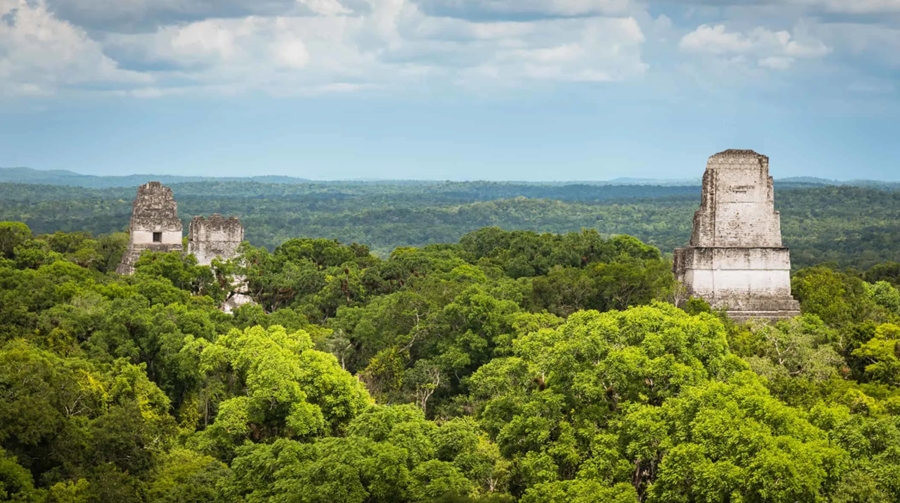
Don’t Forget Travel Basics: Credit Cards and Travel Insurance Matter!
Exploring the ancient ruins of a Mayan temple pyramid is an unforgettable experience—but like any adventure, it’s better when you’re well-prepared. If you’re traveling to sites like the Chichen Itza Mayan temple or the Maya temple Tulum, make sure you’ve got your basics covered.
First up: your credit card. Many vendors in tourist zones around Mexico and Central America accept major credit cards, but it’s smart to carry one that has no foreign transaction fees. Some cards even offer travel points or cashback for museum tickets, dining, and hotel stays. I always recommend carrying a backup credit card as well, just in case your primary gets blocked or lost.
Next, don’t skip out on travel insurance. Whether you’re hiking up steep steps at the Xunantunich Maya temple or taking a boat to visit remote ruins, having travel insurance provides peace of mind. From medical emergencies to trip cancellations, the unexpected can happen fast—and in unfamiliar territory, you don’t want to be left footing a surprise bill. Some policies even cover adventure activities, which is perfect if your itinerary includes jungle treks or cave tubing in Belize.
Trust me—on a trip that’s all about stepping into the past, your future self will thank you for thinking ahead. Credit cards and travel insurance might not be ancient, but they’re essential tools for the modern explorer.
Frequently Asked Questions
How tall is a typical Mayan temple pyramid?
Mayan temple pyramids vary greatly in height. El Castillo at Chichen Itza stands about 98 feet (30 meters) tall, while Tikal Temple IV in Guatemala reaches over 212 feet (64.6 meters)!
Can you go inside the Mayan temples?
In some places, yes! While El Castillo at Chichen Itza is closed to climbers, sites like Xunantunich in Belize still allow visitors to explore the interior chambers and climb to the top.
What was the purpose of the Maya temple pyramid?
They served as ceremonial centers, observatories, tombs, and places for political speeches and public rituals. They were the beating heart of every Maya city.
Why are the steps so steep?
The steep steps symbolized the spiritual journey upward and kept ceremonial activities visible to people gathered below. Also, it made the climb more symbolic and impressive.
What’s the best Mayan temple to visit?
Chichen Itza is the most famous, but don’t overlook sites like Tikal (Guatemala), Tulum (Mexico), and Xunantunich (Belize) for a more immersive, less crowded experience.
Are the Maya temple pyramids related to the pyramids in Egypt?
They look similar, but they developed independently. Both served spiritual purposes, but the cultures and technologies behind them were completely different.
Ready to walk the steps of the ancients?
Plan your visit to a Mayan temple pyramid and experience the power, mystery, and magic of this ancient civilization. Share this article with fellow history buffs and let’s keep these stories alive!
Quick Summary
The Mayan temple pyramid is a symbol of ancient ingenuity, spirituality, and cosmic connection. Built without modern tools, these temples served as religious centers, observatories, and political stages. Inside, they hide chambers, tombs, and older pyramids—each layer revealing the Maya’s deep understanding of astronomy, architecture, and ritual. From Chichen Itza to Tikal, these sacred sites continue to inspire travelers and scholars alike, offering timeless lessons in sustainability, cosmic awareness, and human resilience.
Table of Contents
Cenotes Chichen Itza How-to Instructions Kukulkan Local Mayan temple pyramid Maya temples Road Trip Suytun Tikal Tulum Yucatan

